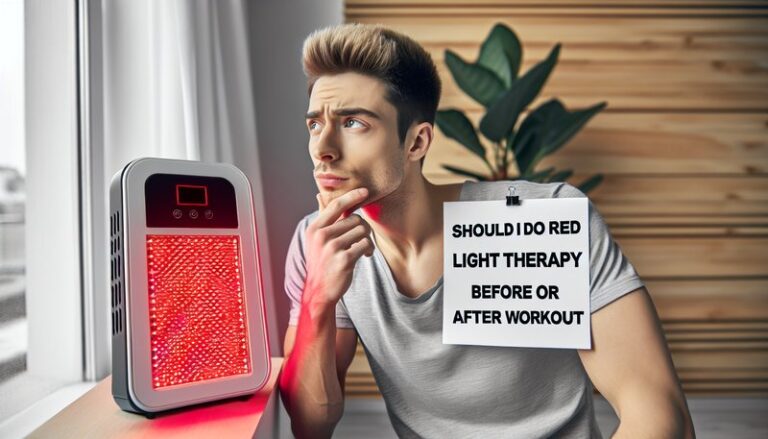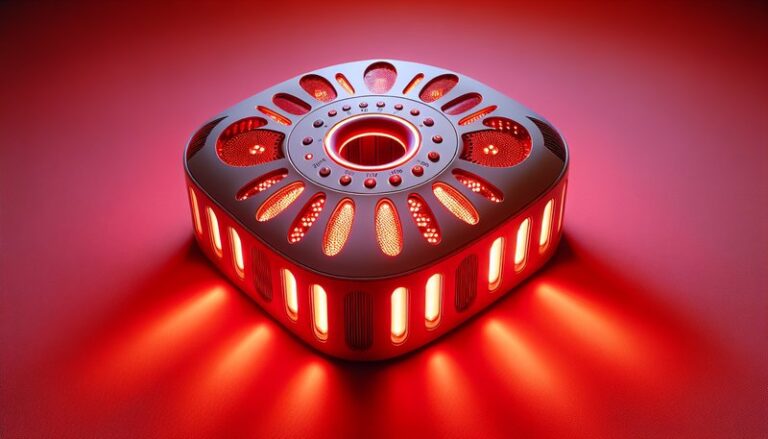Will Red Light Therapy Help Poison Ivy?
Will Red Light Therapy Help Poison Ivy?
Have you ever wondered if there are innovative treatments for the uncomfortable, itchy rash caused by poison ivy? Red light therapy has been gaining attention for its potential benefits in various skin conditions. This article will explore the relationship between red light therapy and poison ivy, examining whether it can alleviate the symptoms associated with this pesky plant.
The following sections will provide insights into what red light therapy is, how it may help with poison ivy, its benefits, considerations, alternatives, and ultimately whether it’s a recommended course of action.
Key Takeaways
- Red light therapy may help reduce inflammation and speed healing related to poison ivy exposure.
- This treatment is non-invasive and has relatively few side effects.
- There are alternative treatments available for poison ivy that might suit different preferences and needs.
What is Red Light Therapy?
Red light therapy (RLT) is a non-invasive treatment that uses low-level wavelengths of red light to penetrate the skin. It’s believed to stimulate cellular function, promote healing, and reduce inflammation. RLT is popular in aesthetic medicine, physical therapy, and sports recovery for its ability to improve skin health, reduce pain, and enhance healing.
Red light therapy machines typically emit light in the range of 600 to 650 nanometers. By targeting the skin’s layers, red light helps regenerate tissues and potentially helps reduce symptoms of various skin ailments, including those caused by poison ivy, such as rashes and irritation.
What are the Benefits of Red Light Therapy?
Unlike many traditional treatments, red light therapy comes with several advantages that may benefit those suffering from poison ivy.
Anti-inflammatory Properties
Red light therapy has been shown to reduce inflammation in the body. By targeting the inflamed skin associated with poison ivy, it may alleviate the uncomfortable swelling and redness often experienced.
Enhanced Skin Healing
Applying red light therapy can stimulate collagen production and enhance cellular repair mechanisms. For someone suffering from poison ivy rash, this could mean quicker healing and less downtime from the irritation.
Non-Invasive Treatment
Unlike corticosteroid ointments or other pharmacological interventions, red light therapy is a non-invasive option. Patients can receive treatment without the need for injections, systemic medications, or topical applications that may have unwanted side effects.
Pain Relief
In addition to reducing inflammation, RLT is known for its pain relief capabilities. Those who experience itching and discomfort from poison ivy may find relief through this gentle therapy.
Is it Possible to Use Red Light Therapy for Poison Ivy?
Yes, individuals can use red light therapy to address the symptoms of poison ivy. However, a few key considerations need to be taken into account before proceeding.
What are the Advantages of Using Red Light Therapy?
Several advantages make RLT a compelling option for treating poison ivy symptoms:
Red light therapy can be easily incorporated into a treatment regimen without the need for specialized skills or equipment, making it accessible to many individuals.
The non-invasive nature of RLT means that there is minimal risk of side effects compared to traditional treatments.
RLT can be done at home with the right device, providing convenience for users.
What are the Disadvantages of Using Red Light Therapy?
While RLT has its benefits, there are also potential drawbacks:
The effectiveness of RLT for poison ivy may vary from person to person, with some individuals experiencing little to no improvement.
Costs associated with purchasing a quality device may be a barrier for some, particularly if treatments need to be repeated frequently.
RLT does not directly address the cause of poison ivy reactions; therefore, it should not be seen as a standalone treatment.
Discover the full story Dangers of Red Light Therapy?
What are the Things to Consider Before Using Red Light Therapy?
Before opting for red light therapy, several important considerations should be addressed.
Skin Sensitivity
Individuals with sensitive skin may want to consult with a healthcare provider before beginning RLT, particularly if they have recently been exposed to poison ivy.
Device Quality
It is crucial to choose a high-quality red light therapy device. Low-quality products may not emit the right wavelengths to be effective, making it important to research and select a reputable option.
Consultation with Healthcare Provider
Consulting a healthcare provider can help ensure that red light therapy aligns with individual health needs and will not interfere with other treatments.
What are the Alternatives to Red Light Therapy?
If red light therapy is not a preferred option, there are several alternatives available for managing poison ivy symptoms.
Topical Corticosteroids
Topical corticosteroid creams can effectively reduce inflammation and itching caused by poison ivy rashes. They are available over the counter or through prescription.
Cool Compresses
Applying cool, wet compresses to the affected area can alleviate itching and discomfort. This method is simple and provides immediate relief.
Antihistamines
Oral antihistamines can help reduce itching and discomfort associated with poison ivy. They may be especially useful for nighttime relief.
Oatmeal Baths
Colloidal oatmeal baths have soothing properties and can provide relief for poison ivy rashes. This natural remedy is gentle on the skin and can relieve irritation.
Conclusion: Is it Recommended to Use Red Light Therapy?
Red light therapy may provide benefits for managing the symptoms of poison ivy, including reducing inflammation, enhancing healing, and providing pain relief. However, individuals should consider their unique circumstances, including skin sensitivity and device quality, before proceeding with treatment. Consulting with a healthcare provider is advisable to tailor the best approach for poison ivy exposure. Additionally, exploring other effective alternatives can help develop a comprehensive treatment plan for relief.
Frequently Asked Questions
Can red light therapy completely cure poison ivy?
No, red light therapy cannot cure poison ivy but may help alleviate symptoms and speed up healing.
How often should I use red light therapy for poison ivy?
Generally, sessions of 10-20 minutes, 3-4 times a week could be beneficial, but individual needs may vary.
Are there any side effects associated with red light therapy?
Red light therapy is generally considered safe with few side effects, which can include temporary redness or irritation in the treated area.
See the full explanation “Does Red Light Therapy Improve Eyesight?”
Can I use red light therapy at home?
Yes, with the right device, red light therapy can be used comfortably at home as a part of your skincare routine.
How quickly can I expect results from red light therapy?
Some individuals may notice improvements within a few sessions, while for others, it may take longer. Consistency in treatment is key for achieving optimal results.





